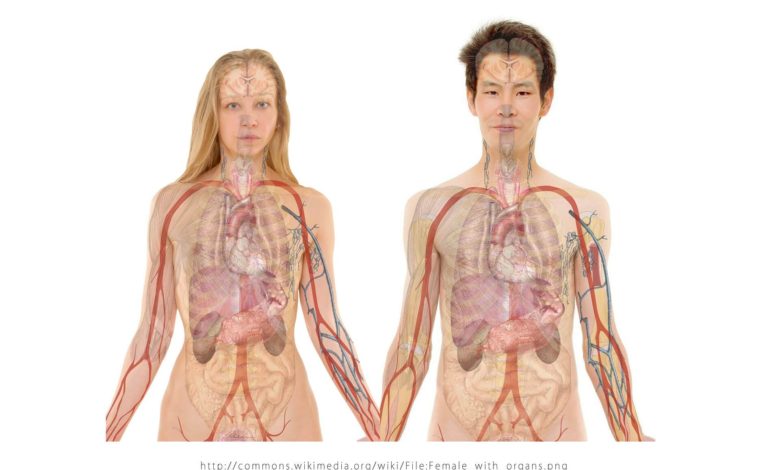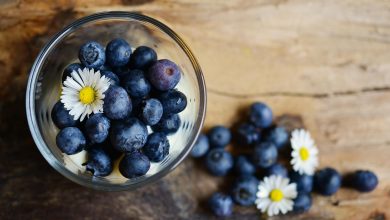Effects of Bergamot and Artichoke on Liver Health

Non-alcoholic fatty liver disease (NAFLD) is a disease that affects many people around the world. 20% of those affected have the most severe form called non-alcoholic steatohepatitis or NASH. There is no current cure for NAFLD, but lifestyle changes and dietary changes can have profound effects. In a recent study, researchers found that a supplement containing extracts from bergamot and wild artichoke can reduce liver fat by 7% to 15%. This article contains information on the effects of artichoke and bergamot extract supplements on liver health.
Fatty Liver
Avoiding sugar, getting more choline, exercising regularly, and losing weight can also support liver health and reduce the risk of NAFLD. Liver disease may only be considered a major concern for those who drink excessively, but it is currently estimated that 80 to 100 million Americans have nonalcoholic fatty liver disease or NAFLD, a liver disease that occurs without alcohol consumption.
Since NAFLD can progress to other more serious problems such as cancer and cirrhosis and is considered a risk factor for heart disease, kidney disease, and Type 2 diabetes, finding strategies to treat it has become an important public health priority. As of now, there is no FDA-approved medication for the condition, but research shows that lifestyle and dietary changes such as supplementing with bergamot and artichoke extracts can help.
Bergamot and Artichokes May Reduce Fat in the Liver
In a study published in Frontiers in Endocrinology in August 2020, the researcher conducted a research study involving 102 participants aged 35 to 70 with fatty liver and slightly elevated cholesterol in a double-blind clinical trial. Participants were randomly divided into two groups, one group was given a placebo, and the other group received 300 milligrams of Bergacyn FF, a supplement containing bioactive compounds from Bergamot. In addition to taking supplements, participants were instructed to follow a Mediterranean-style diet, and obese participants were instructed to reduce their calorie intake by 400 to 500 calories per day. After 12 weeks, the researchers concluded that the supplement reduced overall liver fat by 7%. In participants over 50 years old, liver fat was reduced by 15%.
While bergamot and wild artichoke contain many bioactive substances, researchers have attributed the effects specifically to polyphenols. Polyphenols help fight oxidative stress by acting as antioxidants and protect the body from free radicals. These substances are lipophagy, stimulating the distribution of fat droplets in the body. Citrus fruits are particularly rich in a class of polyphenols called flavonoids, but they are bitter. Bergamot, an inedible type of citrus, contains the highest concentration.
The most beneficial compound in wild artichokes is cynaropicrin, a terpene that reduces oxidative stress and fights inflammation. Wild artichokes also contain other beneficial compounds such as caffeoylquinic acids, luteolin, and apigenin. In a previous study, the researcher found that the combination of bergamot and wild artichoke extract can reduce oxidative stress and combat vascular inflammation or inflammation of blood vessels in Type 2 diabetics with NAFLD.
What is Non-Alcoholic Fatty Liver (NAFLD) Disease?
In order to understand why this study is so important, it should be understood how NAYKH affects the population and its impact. NAFLD is an umbrella term that covers two main forms of liver disease, non-alcoholic fatty liver (NAFL) and non-alcoholic steatohepatitis (NASH). NAFL is the lighter form.
It is characterized by an accumulation of fat in the liver, but there is no inflammation or damage to liver cells. While some people with NAFL continue to develop more severe liver disease, the risk is low. NASH is the more serious form of NAFLD. In addition to excess fat in the liver, NASH is characterized by hepatitis or inflammation of the liver that can cause scarring. Eventually, NASH can progress to excessive liver scarring that can lead to cirrhosis or liver damage. 20 percent of 80 to 100 million Americans with NAFLD have NASH, and 30 to 40% of people with NASH may develop liver scarring (fibrosis).
Fatty Liver is on the Rise in Children
NAFLD was previously considered a condition that mostly affects adults, but is now one of the leading causes of chronic liver disease in children as more and more children are becoming overweight or obese. Although estimates differ, NAFLD is thought to affect approximately 3% to 12% of the general pediatric population and 70% to 80% of children who are obese.
This is partly due to a specific gene variant called PNPLA3 and partly from excessive sugar consumption. In a 2008 study, the researcher found that having the PNPLA3 gene can increase the risk of fat accumulation in the liver and liver inflammation. The Spanish population most susceptible to fatty liver disease probably carries this gene. Researchers from a different study looked specifically at how high carbohydrate and sugar intake could affect the livers of overweight Hispanic children with the PNPLA3 gene. They found that children with two copies of the gene had greater fat accumulation in the liver when eating a diet containing a significant amount of added sugar.
Fructose is particularly relevant as it activates SREBP-1, a protein that is involved in stimulating de novo lipogenesis, which converts carbohydrates into fatty acids in the liver and prevents the breakdown of fats in the liver.
Different Ways to Support Liver Health
Although there is no approved treatment for NAFLD, several studies show that scarring, inflammation, and fat accumulation can all be reversed if the condition is caught early enough. Of course, it’s best to prevent a situation like NAFLD rather than try to reverse it once you have it. Fortunately, there are many things and lifestyle changes you can do to support your liver health. In addition to supplementing with bergamot and wild artichoke extracts, other modifiable factors that can have a significant impact on the development of NAYKH include:
• Removing sugar from diet: It is known that consuming too much sugar causes fatty liver disease by stimulating de novo lipogenesis. Fructose has the most important effect, but sucrose (table sugar) and glucose can also contribute. While consuming natural sources of sugar like fruit sometimes does not cause a problem, you should avoid adding sugar to your diet, especially high fructose corn syrup.
• Consuming more choline: Choline deficiency has been associated with an increased risk of fatty liver. It can protect your liver health by increasing the intake of choline-rich foods such as eggs, grass-fed beef liver, organic, free-range chicken breast, and grass-fed animal meat.
• Losing weight: If a person is overweight, losing weight can help improve your liver health even without changing other factors. In a 2015 study published in Digestive Diseases and Sciences, the researcher found that significant weight loss, defined as more than 10% of total body weight, can reverse fibrosis even in advanced forms of NASH. Some of the participants in the study declined from stage 4 NASH to stage 1.
• Regular exercise: Aerobic exercise helps you burn excess calories, reduces liver fat cells, and can significantly reduce liver enzymes even if there is no change in weight. Exercise can also increase insulin sensitivity, which can lower your risk of developing NAFLD.
• Limitation of drugs: Any drug should be limited to what is necessary and dosing recommendations should be followed. Certain medications, such as corticosteroids, antidepressants, antipsychotics, and tamoxifen (used to treat breast cancer) increase your risk of NAFLD and other health conditions. These risks can be reduced by making lifestyle changes to minimize your dependence on medications.
• Managing high blood pressure: High blood pressure increases your risk of metabolic syndrome linked to the development of NAFLD and insulin resistance. Having knowledge about several natural methods of lowering high blood pressure, the application should be done with the knowledge of the doctor.
• Reducing insulin resistance: It can lead to insulin resistance, metabolic syndrome, prediabetes and Type 2 diabetes, all of which are precursors of NAFLD. It can reduce insulin resistance by following a low-carb diet, exercising regularly, and losing weight.





